In this blog, Shantanu Rakshit and Artabandhu Sahoo highlight the importance of the International Year of Camelids and its significance in India by emphasising its diverse contributions to society.
CONTEXT
The UN has designated 2024 as the International Year of Camelids. These camelids are an important source of livelihood for millions of families. Most of them are pastoralists in dryland and mountainous rangeland ecosystems around the world. The resolution for the International Year of Camelids – proposed by the Government of Bolivia and presented by Ecuador as Country Chair of the Group of Latin American and Caribbean Countries (GRULAC) – was approved by the UN General Assembly on 17 October 2017 upon recommendation by FAO (Food and Agriculture Organization). The International Year of Camelids was officially launched on 4 December 2023. This year it will highlight the significance of camelids in food and nutrition security, economic growth as well as socio-cultural heritage across more than 90 countries.

Camelids play a key role in the livelihoods of communities in arid and semi-arid regions of Africa and Asia and the Andean highlands of South America. These animals provide a ray of hope for the nomadic and indigenous people in extreme climatic conditions as they continue to produce nutritious food and fibre even under extreme conditions. The contribution and potential of camelids are under-recognised. The International Year of Camelids 2024 aims to build awareness of camelids’ untapped potential and calls for increased investment in the camelid sector, advocating for greater research, and capacity development together with the use of innovative practices and technologies (Box 1).
Box 1: Major objectives of celebrating the International Year of Camelids
|
WHAT ARE CAMELIDS?
Camelids are members of the biological family Camelidae. There are seven existing members in this group. Camelids are divided into two groups, viz., Old-World Camelids and New World Camelids. Old World Camelids consist of Dromedary camel (Camelus dromedarius), Bactrian camel (Camelus bactrianus), and Wild Bactrian camel (Camelus ferus). Dromedary camel is commonly known as single hump camel or Arabian camel. This dromedary camel is mainly present in the hot arid deserts of Africa and Asia. A small part of the dromedary population also exists in Australia but presently is in feral condition. Bactrian camel is commonly known as double hump camel or Mongolian camel. Cold desert regions of Mongolia, China, Kazakhstan, Iran and Afghanistan are the major habitat of the double hump camel.
In India, about three hundred double hump camels are present in the Nubra Valley of Ladakh. Llama (Lama glama), Alpaca (Vicugna pacos), Guanaco (Lama guanicoe), and Vicuña (Vicugna vicugna) are four members of New World Camelids. Llama and Alpaca are domesticated, whereas Guanaco and Vicuña are wild. The Andes of the South American continent at an altitude of 3,500 to 5,000 metres (11,000 to 16,000 feet) above sea level is the habitat of these New World Camelids. Outside their natural habitat, commercial lama farms have also been set up in the USA, Canada, England, New Zealand and Australia.
Table 1: Members of Camelids Group
| Type | Member | Habitat | Use |
| Old World Camelids | Dromedary camel | Deserts of Africa and Asia | Used for transport purposes as well as a source of milk, meat and fibre |
| Bactrian camel | Mainly Gobi Desert | ||
| Wild Bactrian camel | Northwestern China and southwestern Mongolia | Wild | |
| New World Camelids | Lama | Peru, Bolivia, Chile, Colombia, Ecuador, and Argentina | Used as a pack animal as well as a source of food & wool
A lama can carry a load of 45-60 kg and travel 25 to 30 km in a day Yields about 3-3.5 kg of fibre every two years |
| Alpaca | Mountainous areas from southern Colombia and southern Ecuador to northern Chile and northern Argentina | Yields about 2.5-3 kg of fibre every two years | |
| Guanaco | Argentina and Chile | Wild | |
| Vicuña | Mostly live in Peru, with smaller numbers found in Chile, Bolivia, Colombia, Ecuador, and Argentina | Wild |
IMPORTANCE OF THE INTERNATIONAL YEAR OF CAMELIDS FOR INDIA
India is the home of rich camel genetic resources. There are nine breeds of camel registered by the ICAR-National Bureau of Animal Genetic Resources (ICAR-NBAGR). Other than the listed nine breeds, some other breeds are expected to be listed in future (e.g., Sindhi). Double-humped camel is also present in India in Nubra Valley of Ladakh.
Table 2: Registered breeds of camel in India
| No. | Breed | Home Tract | Remarks |
| 1. | Bikaneri | Rajasthan | Highest in population in India and is a good draught animal |
| 2. | Jaisalmeri | Rajasthan | Well known for riding and race potential;
Second highest in number |
| 3. | Jalori | Rajasthan | It is a medium sized breed of camel with an active temperament |
| 4. | Kutchi | Gujarat | Highest milk producer |
| 5. | Malvi | Madhya Pradesh | Light or off-white colour and small body size |
| 6. | Marwari | Rajasthan | Used for carrying heavy loads and performing heavy agricultural operations |
| 7. | Mewari | Rajasthan | Fit for the hot climate of the Arawali mountain range;
Considered as a high milk producer |
| 8. | Mewati | Rajasthan and Haryana | Mainly used as draught animals |
| 9. | Kharai | Gujarat
(Predominantly in Coastal belt of Lakhpat, Abdasa, Mundra & Bhachau taluka) |
Well-adapted to both dryland as well as coastal ecosystems in Kachchh;
Excellent swimming capacity in seawater; This breed can tolerate water with high TDS of up to 10000 ppm. |
Camels are an integral part of the Thar Desert of Rajasthan and Kachchh of Gujarat. Raika/ Rabari, Fakirani Jats, Hajiyani Jats and some other communities rely greatly on camels for their livelihood. Camels are a means of transport, milk and entertainment. In the hostile desert ecosystem, when no other option remains available, camels help communities to survive and grow. Camel carts are used for transport of goods and people. Small and marginal farmers use camels in agricultural operations.
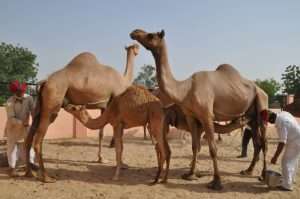 Milking of Camel
Milking of Camel
Here, we need to remember that India ranks second in the world in terms of adult diabetes. The past three decades have seen a 150 per cent increase in the number of people with diabetes in the country. The estimates in 2019 showed that 7.7 crore individuals had diabetes in India, which is expected to rise to over 13.4 crore by 2045. Camel milk is very beneficial for diabetics. Regular consumption of camel milk reduces blood sugar, decreases insulin resistance and improves lipid profiles. Camel milk also has beneficial effects on tuberculosis, hepatitis C, and autism in children. Unique properties of camel milk: it is a low-fat milk and high in minerals and vitamins. It boosts the overall immunity of human beings. Products made from camel milk are also becoming popular among tourists.
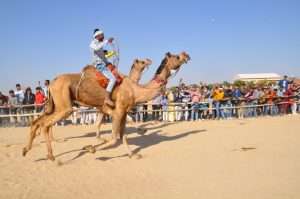 Camel Race
Camel Race
Camel-based tourism activities such as camel safari, camel cart riding, camel dance, camel race, camel hair cutting, camel decoration, camel tattoo show, camel museum, etc., are offered at tourist destinations. Camel safaris offer tourists a unique opportunity to traverse the mesmerizing dunes and barren landscapes on the back of a camel.
 Camel Decoration
Camel Decoration
Camels are also important for the border security of India. The Border Security Force (BSF) uses camels for patrolling the Indo-Pak border adjoining Rajasthan and Gujarat. Jaisalmer breed is used for this purpose. Recently, BSF introduced the first women camel riding squad which is the first of its kind in the world. The Indian Army has deployed double-humped camels for last-mile delivery of logistical support and for mounted patrolling in Ladakh.
| Box 2: The socio-cultural importance of camels
The socio-cultural importance of camels has been well-recognised since ancient times. References to camels in the ancient Rigveda, the famous story of the Camel and Jackal from Shanti Parva of Mahabharata (Rajadharmanusasana Parva, Chapter-CXII), mention of camel in the Panchatantra all reflect the long-standing presence of camels in the cultural consciousness of India. The historical Silk Route, connecting India to Central Asia, relied heavily on camels for the transportation of goods. International camel festivals – at Bikaner, Pushkar mela, Desert Festival at Jaisalmer, Marwar Festival of Jodhpur, Nagaur pashu mela, Mallinath pashu mela, Rann Utsav at Kutch, annual Ladakh Festival – all showcase the socio-cultural significance of camels in Rajasthan, Gujarat and Ladakh. Bikaner’s Usta Kala Craft (Ustado ka kala: Usta Kala) which was introduced by Raja Rai Singh in the 15th century further developed it in Bikaner, and it received GI tag in 2023. Furthermore, lots of traditional products are developed from camel leather, bone and hair. Ushtravahini Mata, Kuldevi of Pushkarna Brahmins and Lok Devta Pabuji Maharaj all hold deep associations with camels in the local culture for centuries. |
Camels in livelihood security
Camelids are an important source of milk, fibre, fertilizer and transport for smallholder farmers and indigenous communities in different regions throughout the world. Camels are a source of diverse avenues of income for many families in India. The livelihood security of many people depends upon camel carts, camel leather work, camel bone work, camel hair products, camel-based tourism, camel dairy and other camel-related business activities.
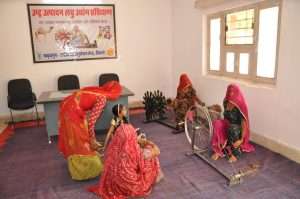 Training on Developing products from camel hair
Training on Developing products from camel hair
Camels in Ecotourism
Camel-based tourism activities such as camel safari, double-hump camel riding, camel cart riding, camel dance, camel race, camel hair cutting, camel decoration, camel tattoo show, camel museum, etc., are offered at tourist destinations. Camel rearers get economic benefits from camel-based ecotourism by utilising camels for entertainment activities, milk and camel-based bi-products. Tourists also have a craze and curiosity about camel milk due to its unique properties and therapeutic value. Different by-products made from camel hide, camel bone and camel hair are in great demand among tourists. Camel-based eco-tourism is popular in the desert of Rajasthan, Rann of Kutch in Gujarat, Nubra valley of Ladakh, and different sea beach areas.
CAMELS IN SUSTAINABLE DEVELOPMENT GOALS (SDGS)
Camels play an important role in advancing the Sustainable Development Goals (SDGs) of the UN on fight against hunger, eradication of extreme poverty, empowerment of women, and sustainable use of terrestrial ecosystems.
Table 3: Importance of camels in Sustainable Development Goals (SDGs)
| SDG | Importance of camels |
| SDG-1:
No Poverty |
Communities, including nomadic and semi-nomadic people in poverty-prone regions, engage in camel rearing and breeding. Small and marginal farmers use camels for agricultural operations. Camel-based products and services offer multiple sustainable sources of income for all communities. |
| SDG-2:
Zero Hunger |
Camel milk is highly nutritious. It is a rich source of minerals, such as Iron (Fe), Zinc (Zn), Copper (Cu) Manganese (Mn) and vitamins like niacin (Vit B3) and vitamin C (3 times higher than in cow milk).
Camels also contribute towards sustainable agriculture through draft energy and manure. |
| SDG-3:
Good Health & Well-Being |
Camel milk is helpful in addressing health issues, such as diabetes, autism, tuberculosis (TB), hepatitis C, gut health, heart health, hypercholesterolemia, asthma, respiratory diseases, common skin infections, etc. |
| SDG-5: Gender Equality | A significant number of women are engaged in processing and making of products from camel hair, leather and bone. |
| SDG-12: Responsible Consumption and Production | Sustainable management and efficient use of natural resources in fragile, hot and cold desert ecosystems is important for camel rearing. Conservation of local plants and development of sustainable camel-based tourism that creates jobs and promotes local culture and products are necessary. |
| SDG-13: Climate Action | Camels release less methane (expressed on the basis of body mass) than ruminants.
Use of camels in agricultural operations and transport in certain areas reduces fossil fuel consumption. |
| SDG-15:
Life and Land |
Camels are an integral part of desert ecosystem. It contributes in seed dispersal which promotes the growth of native plants. It follows a unique browsing pattern which promotes sustainable use of forest resources rather than damaging small plants. |
MAJOR STAKEHOLDERS AND THEIR ROLES IN IYC-2024
Multiple players – government agencies, NGOs, private companies, local community-based organizations, research institutions – are engaged in evolving a congenial environment for the development of camel herders and camel entrepreneurs. Promoting camel conservation, utilising the camel for dairy and ecotourism purposes, organising capacity development of camel herders and camel entrepreneurs, developing market for camel milk and milk products, and developing public awareness about camel milk as a natural adjuvant is a herculean task.
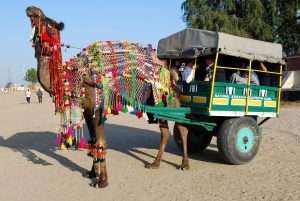 Camel Cart Riding
Camel Cart Riding
Governments develop and revise policies from time to time to address emerging challenges. NGOs, such as Lokhit Pashu Palak Sansthan (Pali, Rajasthan), Urmul Seemant Samiti (Bajju, Rajasthan), and Sahjeevan (Bhuj, Gujarat), are working for the empowerment of camel herders and the development of innovative camel milk-based products. NGOs, like the Foundation for Ecological Security (FES), are working to regenerate and conserve forests, and pastureland. Kumbhalgarh Camel Dairy (Camel Charisma), Aadvik Foods, Amul, Sarhad Dairy, Bahula Naturals and many other private parties have launched camel milk, milk products and other products.
ICAR-National Research Centre on Camel (ICAR_NRCC), Bikaner, has made a significant contribution through basic and applied research on camel including enhancing dairy potential of camel, developing molecular diagnostic tools for screening and diagnosis of camel diseases, utilising unique camelid antibodies, establishing unique properties of camel milk, validating the therapeutic value of camel milk, standardising protocol for preparation of novel camel milk products, and promoting camel-based eco-tourism. ICAR-NRCC is utilising X (Twitter) (@IcarCamel), Facebook (NRC Camel), Instagram (nrcc_insta), YouTube Channel (ICAR-NRC on Camel), press releases and print media along with other traditional methods for dissemination of technology.
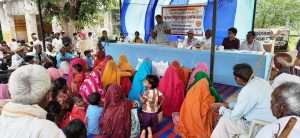 Animal Health Camp
Animal Health Camp
| Box 3: Efforts of the Rajasthan Government on camel promotion
The Rajasthan Government has implemented the ‘Rajasthan Camel (Prohibition of Slaughter and Regulation of Temporary Migration or Export) Act, 2015’. There is a restriction on inter-state trading of camels under this act. The impact of this act on camel rearers needs to be examined and necessary amendments should be made accordingly. The Rajasthan Government launched a Camel Development Scheme (Ushtra Vikas Yojana) under Rashtriya Krishi Vikas Yojana (RKVY) on 2 October 2016. Under this scheme, camel farmers got a total of Rs. 10,000 for each calf born, in three instalments. Such a scheme needs to be continued with higher intensity. The Animal Husbandry Department organised health camps and provided required medicines for treating animals free of cost under the Pashudhan Nisulk Arogya Yojana. The Rajasthan Tourism Department also organizes camel-related shows at festivals such as the Desert Festival in Jaisalmer, the Marwar Festival in Jodhpur, the International Camel Festival in Bikaner, etc., to promote camel-based tourism. Organised platforms for activities such as camel racing, dance, hair cutting design, polo, tattoo show, etc., need to be developed at major tourist places in Rajasthan. |
All stakeholders, including governments, policymakers, camel rearers, NGOs, civil societies, and research institutions have important roles to play in the successful completion of the objectives laid out for celebrating the International Year of Camelids (IYC-2024). To mention,
- Government, policymakers, and funding agencies should invest more in camel-related research and outreach as well as innovative practices and technologies. They should also invest in developing the capacities of local actors and protect traditional knowledge, practices and heritage of Indigenous Peoples and local communities;
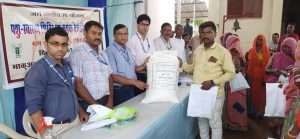 Animal Health Camp
Animal Health Camp
- Policymakers must ensure that the consequences of the policies and regulations to promote the tangible well-being of camels and camel herders do not become a hurdle in the economic growth of both camel herders and camels. Lots of efforts are required to develop efficient camel milk marketing channels and platforms organised to show camel-based entertainment activities;
- More community engagement is required in addressing issues, such as shortage of grazing areas, protection of common properties for camel browsing, and grazing rights in forest lands;
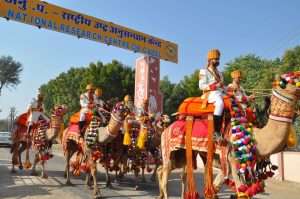 Camel Procession
Camel Procession
- Private sector companies should engage more with camel-herding communities. Entry of more private companies into the camel milk sector is required to develop a stable and sustainable camel milk demand-supply system. Indian consumers are still not aware of the nutritional value of camel milk and other by-products. Intensive awareness campaigns can help in promoting camel products. A growing market for camel milk and other by-products can positively impact the economic well-being of camel herders;
- Non-Governmental Organizations (NGOs) can play a significant role in community empowerment, environmental conservation, cultural preservation, and strengthening of networks, and collaboration to benefit camel herders;
- Research institutions have the responsibility to explore the scientific validity of camel milk’s therapeutic value, use of camel in different biochemical research, and also offer efficient solutions to camel health problems. More innovative technologies should be introduced in camel farming and the preparation of camel-based products. Capacity building of camel herders and entrepreneurs are essential to use the benefits deriving from progress made in camel research. For example, ICAR-NRCC is committed to celebrating the International Year of Camelids through awareness camps, workshops, policy papers, and the promotion of camel products.
END NOTE
There are a large number of camel rearers distributed over a large geographical area. They are struggling to adapt and prosper with the rapid economic development of other sectors. More cooperation among all stakeholders and convergence of efforts by all actors are required across the production, conservation, and promotion of camel and camel products. We have to reach not only all camel rearers but also all potential consumers of camel milk and other products.
Let’s all come forward to build awareness about the untapped potential of camels and contribute to the conservation of these ‘Heroes’ of deserts and highlands.
 Dr. Shantanu Rakshit, Scientist (Agricultural Extension) at ICAR-National Research Centre on Camel, Bikaner. He can be reached at email rakshitshantanu90@gmail.com
Dr. Shantanu Rakshit, Scientist (Agricultural Extension) at ICAR-National Research Centre on Camel, Bikaner. He can be reached at email rakshitshantanu90@gmail.com
 Dr. Artabandhu Sahoo, Director at ICAR-National Research Centre on Camel, Bikaner.
Dr. Artabandhu Sahoo, Director at ICAR-National Research Centre on Camel, Bikaner.

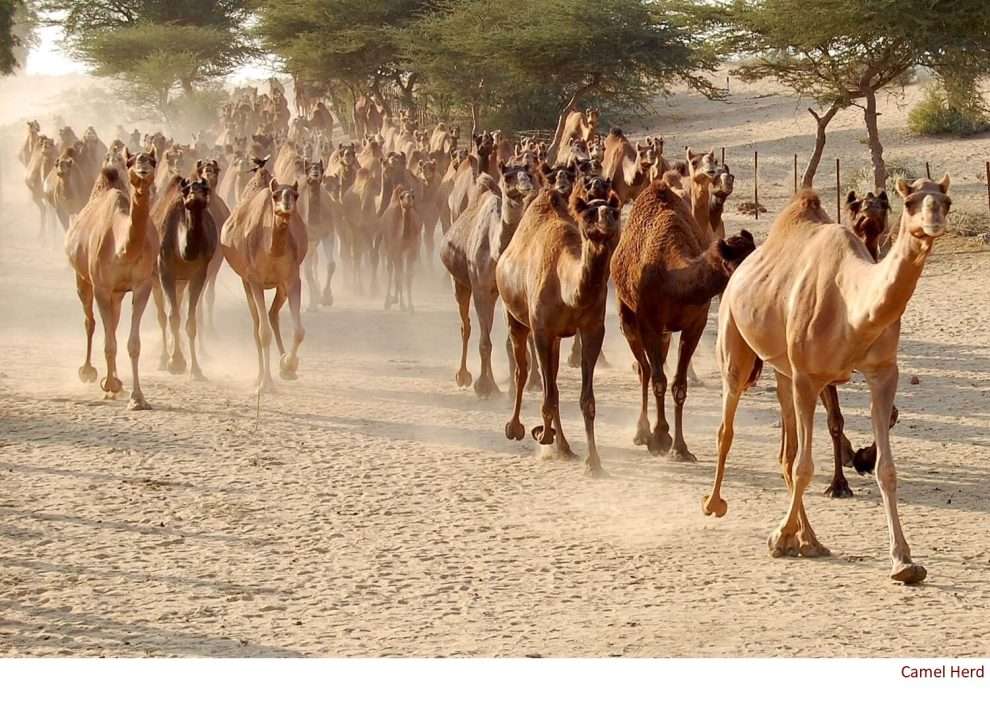

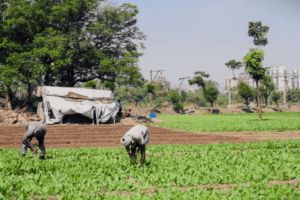

Add Comment